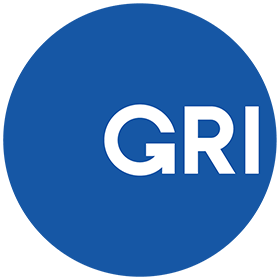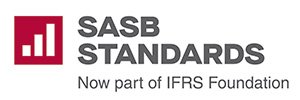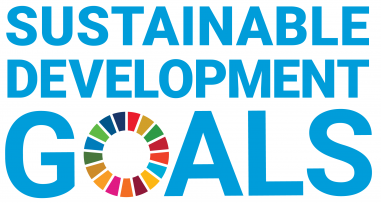Approach to Sustainability Reporting
Resolute Forest Products has tracked and reported on a range of environmental, economic, social and governance performance indicators since 2008. We have continued to raise the bar on our sustainability reporting ever since, preparing reports in accordance with the Global Reporting Initiative (GRI) guidelines for sustainability reporting since 2010 and transitioning to the GRI Standards in 2018. Resolute’s environmental, social and governance (ESG) performance is also highlighted in three leaflets available for download on our Sustainability landing page.



UN SDGs and SASB
In 2021, we enhanced the robustness of our sustainability reporting by integrating the United Nations’ (UN) Sustainable Development Goals (SDGs) into our GRI-based reporting framework. We engaged a global consultancy specialized in corporate sustainability practices to help us link our vision, values and shared priorities with the SDGs deemed relevant to Resolute by our internal and external stakeholders. We are focused on contributing to the SDGs by achieving our public commitments.
Our sustainability reporting also follows the Sustainability Accounting Standards Board (SASB) Standards for forestry management and pulp & paper products.
The GRI Sustainability Reporting Framework
The disclosures published on this website and in the associated GRI content index have been prepared in accordance with the Standards defined by the Global Reporting Initiative. Our reporting corresponds to the GRI Universal Standards, which includes the required general standard disclosures, as well as generic management disclosures and indicators related to each material topic (ie. our shared priorities).
Moving to web-based GRI-compliant sustainability reporting provides information that is easier to update and more accessible for all of our stakeholders. We monitor our shared priorities on a continuous basis through regular interaction with stakeholders and periodic analysis, including stakeholder questionnaires we undertake every two to three years.
In 2023, we retained the Center for Sustainability and Excellence (CSE) to provide verification of the application of the GRI Standards to our sustainability reporting and to verify that our disclosures meet the minimum requirements of reporting in-accordance with the standards. The scope of work involved a review of Resolute’s sustainability reporting activities, including:
- Statements, information and performance data
- Data and information as per the requirements of the GRI Universal Standards Sustainability Reporting Guidelines, as indicated in the GRI Content Index
CSE confirmed Resolute’s sustainability reporting was in compliance with the GRI Standards "In Accordance" level.
Boundary and Presentation of Data
Resolute’s sustainability strategy is focused on key performance areas based primarily on material topics identified by our stakeholders. Linking indicators to these shared priorities, while ensuring disclosures that measure our impacts, provides us with a clear reporting process for sharing our performance.
The GRI Universal Standards deliver a robust framework to support this process, binding the indicators we measure to our shared priorities so that our outputs address the concerns and interests of diverse audiences. The latest edition of the Standards raises the bar, encouraging Resolute to disclose increasingly detailed information on management approaches and evaluation mechanisms for all material aspects. The disclosure requirements build on our solid record over the past several years, marked by accurate time-series data.
The Standards require a description of each material topic’s boundaries, which should include an analysis of where the impact occurs (e.g. on the company, internal or external stakeholder), as well as the company’s relationship with the impact (i.e., whether the company has caused or contributed to the impact, or is directly linked to the impact through its business relationships).
The following table identifies the stakeholder groups consulted in 2022 and the material topics they identified as high priorities.
Shared Priorities
High priority material topics |
Boundary
Stakeholder groups who identified material topics as high priority |
| Forest management |
Resolute executives and board members, sustainability committee members, employees and retirees, customers, suppliers, First Nations and other Indigenous Peoples, industry associations and other business partners, government and elected officials, community members of an operating community and investors and financial community |
| Employee health, safety and wellness |
Resolute executives and board members, sustainability committee members, customers, First Nations and other Indigenous Peoples, industry associations and other business partners and government and elected officials |
| Economic performance |
Resolute executives and board members, sustainability committee members, employees and retirees, First Nations and other Indigenous Peoples, industry associations and other business partners, government and elected officials, community members of an operating community and investors and financial community |
| Ethics, integrity and anti-corruption |
Resolute executives and board members, sustainability committee members, employees and retirees, customers, suppliers, government and elected officials and investors and financial community |
| Human rights |
Resolute executives and board members, customers, suppliers, First Nations and other Indigenous Peoples, community members of an operating community |
| Environmental compliance |
Resolute sustainability committee members, employees and retirees, customers, suppliers, First Nations and other Indigenous Peoples, industry associations and other business partners, community members of an operating community and investors and financial community |
| Water management |
Resolute suppliers, First Nations and other Indigenous Peoples, government and elected officials, community members of an operating community and investors and financial community |
| Climate change |
Resolute executives and board members, sustainability committee members and customers |
Performance data is collected for the calendar year and covers all operations where Resolute has a controlling interest. Unconsolidated entities in which we have non-controlling interests are excluded (as detailed in our 2021 Form 10-K, pages 4-5). Any exceptions to this rule are clearly identified. Where appropriate, we report using similar indicators from year to year in order to facilitate comparison, as well as data expressed in relation to metric tons of production for a given year to illustrate variation in intensity. All dollar values are expressed in U.S. currency, unless otherwise indicated. The most recently reported sustainability performance data is for the 2021 calendar year.
Assurance and Data Measurement Techniques
Data and detailed qualitative information disclosed through our website have been collected using rigorous procedures across several levels of the organization, from operations to management.
We gather company-wide and mill-by-mill statistical data (energy, water, waste, greenhouse gas (GHG) and air emission levels, safety performance, community engagement, donations, etc.) via data management systems and established software platforms. This data is compiled by facility-level coordinators and managers before being centralized and analyzed by relevant corporate departments. Data parameters and calculation methods are established according to a combination of international, government, industry, and company standards and protocols.
We obtain information related to company practices, management approaches and evaluation mechanisms through interviews with internal subject matter experts who provide supporting documentation, such as company policies, internal memos and aggregated data from their data management systems. The subject matter experts who provide this data are all able to explain the processes by which they collect, aggregate and analyze information for each indicator to support accurate, reliable reporting.
There is an extensive system of checks and balances within and between departments to verify accuracy in performance data and qualitative descriptions. Content is reviewed by senior managers and continuously checked against past publications and internal reports. Our data collection process requires explanation of any deviations from previous performance and detailed descriptions of the methods, techniques and constants used to provide accurate calculations and interpretations.
Another important step in the reporting process is presenting high-level information on shared priorities, public commitments and annual performance to the sustainability committee and executive team. This committee receives and assesses explanations from subject matter experts on their reasoning, reporting and action plans, and also provides an opportunity for feedback from a group of individuals with diverse professional backgrounds and positions within the company. This forum has led to productive partnerships and planning exercises between departments that help us achieve our ambitious commitments and reporting accuracy.
Furthermore, external verification of our data is performed for certain performance indicators, including scope 1 GHG emissions.
As specified by the GRI Universal Standards, this website contains information on general policies and performance as well as detailed data on issues identified by our stakeholders. The website layout is designed to provide access to that information for the broadest possible audience. Our GRI content index enables all users to access precisely the information that corresponds to their interest to serve our diverse, international stakeholder base.